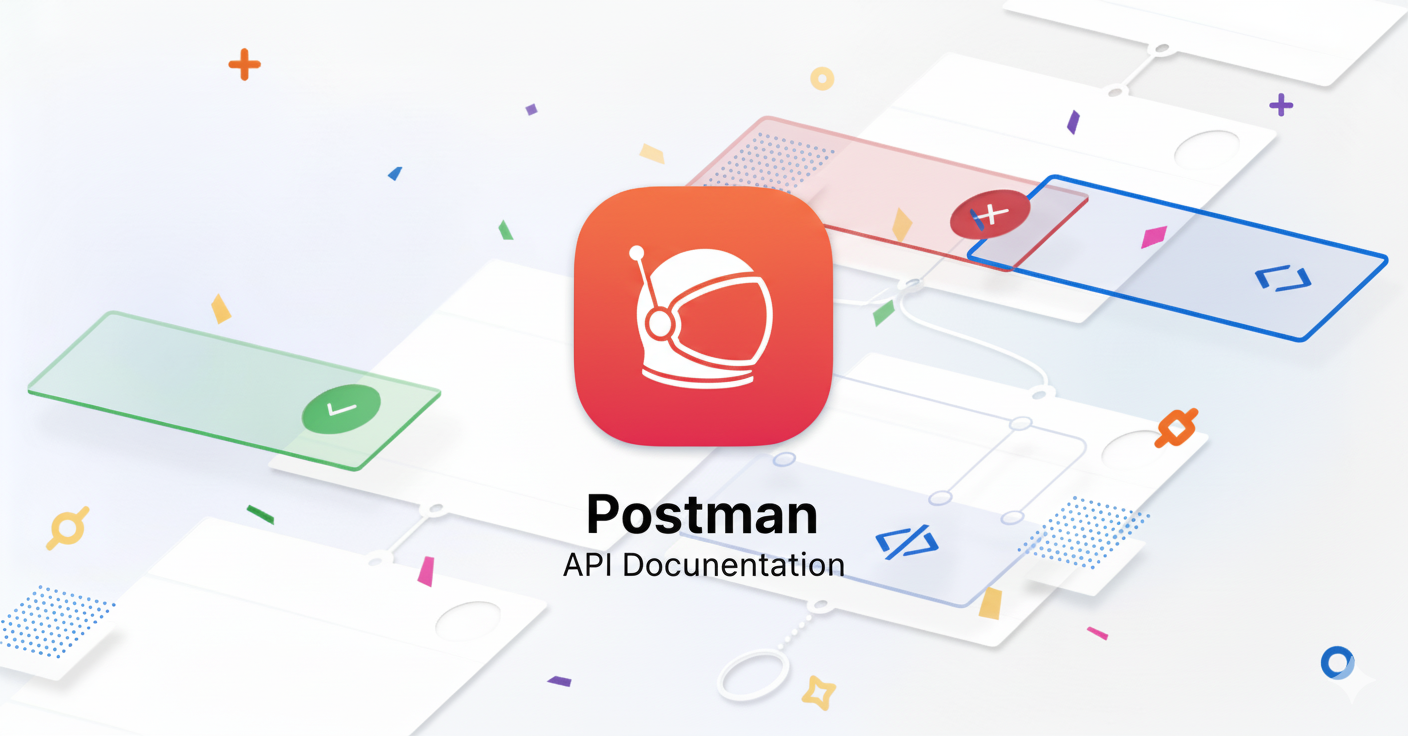
Why Every Frontend Developer Should Master Postman
Frontend developers who master Postman build faster, bug-free UIs. Learn how API testing, environments, and documentation in Postman supercharge your frontend workflow.
Rejown Ahmed
Introduction — why Postman (and API docs) matter to frontend devs
As a frontend developer you build the UI users interact with — but your UI is only as good as the APIs behind it. Learning Postman and API documentation tools isn’t “just for backend” — it’s an investment that speeds development, reduces bugs, and makes collaboration frictionless. Postman helps you run requests, capture and reuse values (tokens, IDs), mock endpoints for parallel work, write automated tests, and publish machine- and human-friendly API docs.
Why Postman gives you a real productivity edge
- Debug faster: Send requests and inspect responses without writing frontend code or firing up the app.
- Parallel development: Use Postman mock servers so you can build UI components while backend endpoints are still in progress.
- Reliable integration: Save auth tokens and response values into environment variables so your app flows mirror real-world use.
- Ship safer: Add assertions to responses with simple tests and run them in CI via the collection runner or monitors.
Key Postman features frontend devs should master (and how to use them)
1) Auto-save values from responses (save tokens, IDs)
After a POST /login or any auth response, you’ll usually want to store the token and reuse it in future requests. In Postman tests you can extract values and store them as environment variables:
// in Tests tab
const json = pm.response.json();
pm.environment.set("authToken", json.token);
Using saved variables like {{authToken}} removes the friction of copy/paste, and makes recorded flows reproducible. Postman supports scripts for this exact use-case.
2) Route (path) params — test endpoints that use :id, {id} or query strings
If your frontend calls endpoints like GET /users/:id or GET /products/{slug}, Postman lets you define path variables directly in the URL and supply values in the UI. This makes it easy to test different routes and simulate edge cases (missing param, invalid id, etc.). You can also set path/query values dynamically from scripts.
Example: URL in Postman
GET {{base_url}}/users/:userId
Then set userId in the Path Variables section (or from a script).
3) Setting data type / request body formats
Postman supports multiple body types — raw (JSON), form-data, x-www-form-urlencoded, binary — and will let you set the Content-Type header easily. This is essential when your UI must send multipart/form-data for uploads or application/json for API payloads. Use the Body tab to switch formats and test how your backend responds to different content types.
4) Different environments — local, staging, production
Group variables into environments (e.g., local, staging, prod) so switching contexts is one click: {{base_url}}, {{clientId}}, {{authToken}}. This prevents accidental calls to production and makes it simple to test cross-environment behaviors. Environments are fundamental for safe, repeatable tests and teamwork.
5) Testing & automation — write assertions, run collections
Write tests in the Tests tab using the pm.* API:
pm.test("status is 200", () => pm.response.to.have.status(200));
pm.test("response has userId", () => pm.expect(pm.response.json().id).to.exist);
Use the Collection Runner to run suites of requests (smoke tests, end-to-end API flows), or set up Postman Monitors / CI integration to run them on schedule or during your pipeline. This helps catch API regressions before they hit the UI.
6) Mock servers & documentation (parallel work + better handoffs)
Create Postman mock servers from your collection examples so frontend components can fetch realistic responses while backend work is in progress. When your API is stable, Postman can also publish interactive docs that your teammates (or external partners) can use to test endpoints directly from their browsers. These features reduce friction between design, frontend, and backend teams.
Quick practical workflow (how a frontend dev should use Postman day-to-day)
- Create a collection for your feature (e.g., "Checkout API").
- Add example requests (login, create cart, submit order).
- Set up environment variables:
base_url,authToken,test_user_id. - After POST /login, add a test to auto-save the token. Use
{{authToken}}in subsequent requests. - Turn on a mock server while backend is in development so your UI can fetch example responses.
- Add tests for key API contracts (status codes, response schema basics) and run them locally or in CI to catch regressions.
Copy-paste cheatsheet (pre-request + test snippets)
Pre-request: add a timestamp header
pm.request.headers.add({key: "X-Timestamp", value: new Date().toISOString()});
Test: store token and assert 200
pm.test("status 200", () => pm.response.to.have.status(200));
const data = pm.response.json();
pm.environment.set("authToken", data.token);
Use saved variable in headers
Authorization: Bearer {{authToken}}
SEO & API docs tip (write docs so search finds them)
Well-structured API docs can rank and drive traffic (developers search for “how to use X API” or “token auth for Y”). Use clear endpoint names, example requests/responses, code snippets (curl, JS fetch), and meaningful titles. Publish interactive docs (Postman supports publishing) so search engines can index the high-value content you provide.
Final takeaway — what to practice this week
- Build a single Postman collection for a feature you’re working on.
- Add a login request that saves the token automatically.
- Create a small mock server and swap
base_urlto it — build your component against the mock. - Add one basic test per critical endpoint (status + quick schema check) and run the collection.
Do these four things and you’ll instantly reduce manual testing time, eliminate copy/paste token headaches, and be able to iterate the UI independently of backend availability.